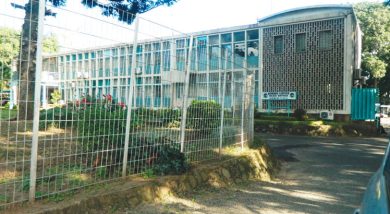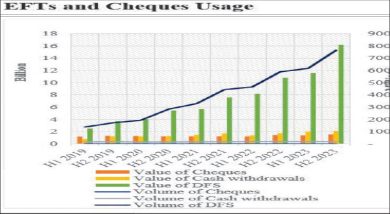Budget offers no hope for the poor
For over two years, sugarcane seller Gift Mika is yet to see any change for the better.
At the start of his business, he used to pay K10 000 to travel from Blantyre to Chikwawa and back, a distance of about 80 kilometres to order sugarcane. He would make a good fortune out of it.
But now, Mika needs K30 000 to go to Chikwawa and back. And to recover that money he has to transfer the cost to his customers.

Says Mika: “With K50, one could buy sugarcane but now I have to sell the sugarcane at K500. However, many cannot afford.
“In turn, my sale turnover has declined and I am no longer able to make enough money to support my family. I just come here because I don’t want to start stealing.”
He says he has been finding it hard to find a job.
“If things continue the way they are, we will not survive,” says Mika.
As for Enigechi Dayi, a homeless widow in her 70s, she only dreams for better days.

Losing her husband and three children means a cut to her life support.
Now she hops from one street to the other, begging for food while Wenela Bus Depot in Blantyre has become her permanent home.
She says: “I have no one to take care of me, no house, no food and no clothes. When I lost my family, I relied much on farming, but then, floods came and destroyed my field.
“I travelled all the way from Nsanje to Blantyre hoping I could get a job but people say I am aged. For now, I can only dream of a better life.”
Growing social and economic challenges
Mika and Dayi are among an estimated nine million Malawians who have been wallowing in poverty for the last decade.
However, this is despite the fact that Malawi’s gross domestic product (GDP) per capita income, the economic output of a nation per person, has been on the increase in recent years, rising from $312.1 (ab out K323 336) in 2016 to $634.8 (about K657 653) in 2021.
This is also contrary to an indication that a rising GDP per capita income translates to a prospering nation.
During this period, there have been growing levels of inequality in the country, with the gap between the richest 10 percent and the poorest 40 percent of Malawians said to have increased by almost a third between 2004 and 2011.
Oxfam International data also showed that Malawi’s Gini coefficient, which measures the extent of distribution of income, jumped from 0.39 on a par with Cameroon to 0.45 on a par with the Democratic Republic of Congo.
The British charity said if in the next five years inequality were to increase at the same pace as it did between 2004 and 2011 (that is the Gini-coeffient increased by six points from the current level of 0.45 to 0.51) while consumption was projected to still grow by 10 percent, then the projected number of poor people in 2020 would be 9.5 million.
According to the report, a further worsening of inequality by 10 points from 0.45 to 0.55, would see 10.2 million poor Malawians in 2020.
Failing efforts to improve quality of life
National Planning Commission (NPC) says at the current pace, Malawi will unlikely halve the levels of poverty and reduce inequality by 2030 in line with the Malawi 2063, the country’s long-term development strategy.
NPC says while the Covid-19 pandemic has worsened the situation, other factors include a high population growth rate, limited access to financial services and high levels of corruption.
This is despite Malawi implementing various interventions, including social protection programmes which seek to improve food security at the household and national level and reduce poverty.
NPC director general Thomas Chataghalala Munthali says graduating to a low-middle income by 2030 and meeting most of the Sustainable Development Goals (SDGs) is possible if the country focuses its capacities and energies on doing right things.
“We don’t have the luxury of time. Thus, investment in large-scale mining, mega farms and tourism should be prioritised along with the creation of an enabling environment that includes investment in energy, information and communications technology, strategic transport networks, macroeconomic stability and good governance.”
Failing sustainable development
June 2022 Voluntary National Review (VNR), coordinated by the NPC in collaboration with the Ministry of Finance and Economic Affairs with technical and financial support from UN agencies attests that Malawi is still struggling to attain the desired economic growth for the successful implementation of SGDs to be attained by 2030.
The VNR shows that since implementation of the SDGs in 2016, Malawi’s economic growth has averaged 3.5 percent, a 2.5 percentage points below the SDG target of 7.
Results show that while significant progress has been made towards goals 2 (zero hunger), 3 (good health and well-being), 4 (quality education), 6 (clean water and sanitation) and 14 (life below water), moderate progress has been achieved on goals 5 (gender equality), 7 (affordable and clean energy), 8 (decent work and economic growth), 9 (industry, innovation and infrastructure), 13 (climate action) and 17 (partnership for the goals).
However, there is little or no progress on goals 1 (no poverty), 10 (reduced inequalities) and 15 (life on land) and no sufficient data to assess progress on goal 11 (sustainable cities and communities), 12 (responsible consumption and production) and 16 (peace justice and strong institution).
SDG targets to reduce Malawi poverty levels to 25.1 percent by 2030.
Fiscal support
In his K3.87 trillion 2023/24 financial plan presented last week in Parliament in Lilongwe titled ‘Sacrificing today for a better tomorrow: Regaining macro-economic stability and growth through collective responsibility for our shared future, Minister of Finance and Economic Affairs Sosten Gwengwe focused on implementing policy reforms to enhance resource mobilisation accompanied by prudent expenditure management to ensure that the country’s debt is put on a downward trajectory.
He said the budget has been formulated in line with the aspirations of the country as outlined in the Malawi 2063 First Ten- Year Implementation Plan, observing that the resource envelope for Malawi has always been inadequate when compared to the country’s development needs.
However, both Centre for Social Concern (CfSC) and Consumers Association of Malawi (Cama) agree that the policies implemented and outlined by the minister have failed to address the plight of the poor.
Said CfSC economic governance officer Bernard Mphepo: “Any budget that fails to address the plight of the poor is not a good budget. This budget will not be able to address high levels of poverty and inequality.”
Cama executive director John Kapito says since the budget has not offered any cushion measures to the rest of poor Malawians outside the civil service grappling with the cost of living crisis.
“The budget has failed to talk to the rest of Malawians,” he said.
Against a minimum wage of K50 000, rising maize prices now at averaging of K37 000 per 50 kilogramme bag, the cost of living has averaged K356 000 as at January 2023 for a family of six.





